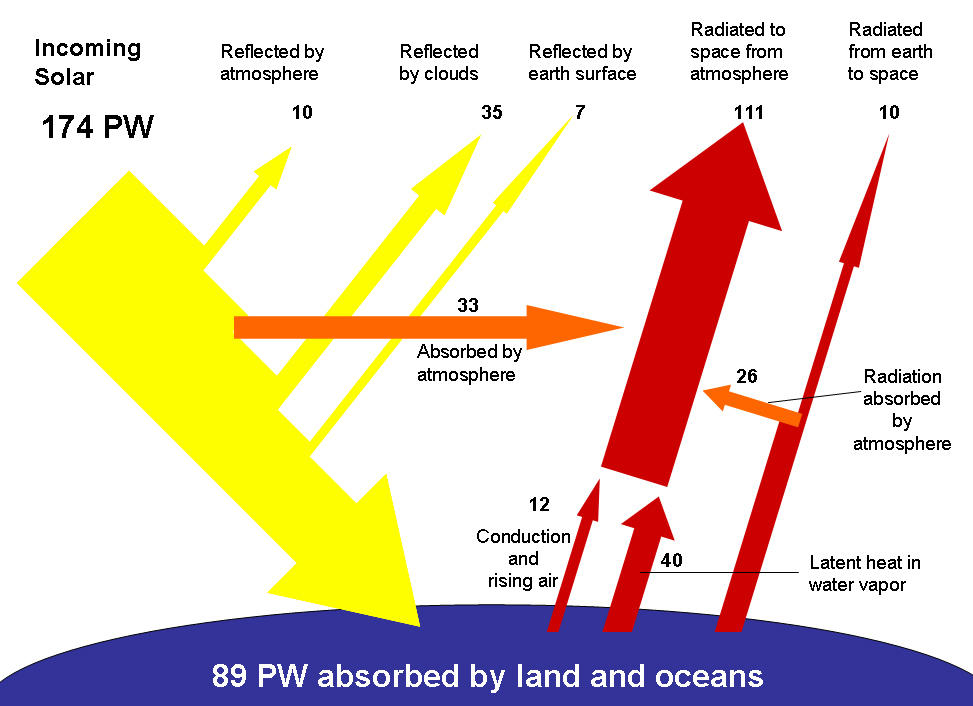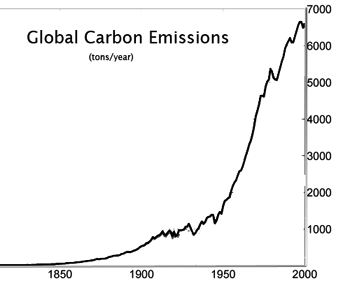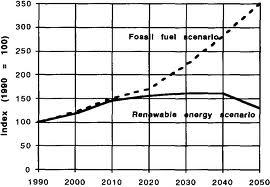Introduction
There is no doubt that the world today is coming into terms with the reality of climate change. Over the past few decades, the level of greenhouse gasses in the environment has been on the rise. The impact has been evident by the alarming decrease in human health, biodiversity, and ocean levels. Electric power supplied for consumption through the power grids mainly comes from non renewable sources which pollute the environment (Heiman & Solomon, 2004).
Studies have established that the largest source of pollution in the environment is the electric generation industry. In addition to polluting the environment, the traditional sources of electricity are becoming costly to consumers as time goes by. But, there are alternative sources of energy which are environmentally friendly, renewable and relatively clean (Hughes, 2009).

Solar power is among the renewable sources of energy which are drawn on natural resources. According to Schelly (2010) the amount of solar energy absorbed by the earth within a few hours is more than that the amount of energy collectively used by human beings within more than year. This fact makes solar energy a viable source of electricity considering that it does little harm to the environment (Schelly, 2010).
No harmful effect on climate
Solar energy, despite the method used for its production, is a new form of energy that shows sustainability compared to fossil fuels. It therefore has a high potential to supplement or replace dependence on fossil fuels. Solar energy contributes to saving the environment in several ways. The first way is that it is clean and free. The only cost in the production of solar energy is making the solar panels. After which, generation of electricity is free at no financial cost. In addition, the panels do not generate any waste in the process. Basically, the panels depend on sunlight during the day to generate electricity and there is no external fuel needed to get sunlight (Bradford, 2006).
The number one source of emission of greenhouse gasses is burning of fossil fuels. Fossil fuels are hydrocarbons meaning that their chemical composition contains hydrogen and carbon. During the process of combustion, the hydrocarbon produces heat energy and greenhouse gasses. These gases alongside particulate matter are released into the air thus polluting the environment. This phenomenon is evident by the smog witnessed in many cities around the world. During incomplete combustion of the fossil fuel, another toxic gas is generated which when released into the air poses serious health risk to those exposed to it. Even in little doses, these toxic gases and particulate matter can cause health hazard to human beings.
Global warming is caused by the release of carbon dioxide and other green house gasses in to the atmosphere. Figure 2 shows the how global carbon emotion levels has been increasing and is projected to continue increasing. When the level of carbon dioxide increases, it blocks heat radiated on the earth by the sun and retains it in the atmosphere leading to increase in temperatures. This has been an issue of global concern and has been discussed in various global forums. To cut down the amount of carbon dioxide released in to the atmosphere use of alternative sources of energy have been proposed; solar energy being one of the options.

However, these processes never occur in solar panels which help to convert the solar energy into electricity. When making the solar panels, there are harmful chemicals used which can have adverse effect when released to the environment. In cases of large scale production, a lot of land is required for installation of the panels. This can be an issue if the land used is cultivable land or land used for other essential income generating activities.
Limited resources used
The second advantage is that solar energy does not rely on limited resources. As long as the sun will continue shining during the day, production of electricity through solar energy will always be possible. However, fossil fuels depend on limited resource which is depleting at an unsustainable rate. Fossil fuels primarily involve coal and oil.
These resources can easily be withheld from the global markets but sunlight cannot be affected by such market forces. Thirdly, the power system in a solar energy generating plant requires low maintenance. Compared to other power systems, solar power system contains just panels with no moving parts. As a result, the cost of maintenance is very low as parts do not easily wear out. Users do not have to think about money for maintaining the system. On the contrast, power plants that rely on fossil fuels to generate electricity require constant and regular maintenance.
No radiation
Even though nuclear energy is regarded one of the renewable energy sources, it poses one large risk with severe health implication to living organism. In nuclear power plants, dangerous radiation can leak into the environment in addition to nuclear waste being produced as by-product. Nuclear power plants have a low thermal efficiency compared to the solar power plants. This implies that a lot of heat produced in the power plants goes to waste. This has effects to the environment nearby the plants’ locations (Chiemeka & Chineke, 2009).
The negative impacts of nuclear energy to the environment are mostly experienced in the energy fuel cycle. This involves the extraction process, using, and releasing the energy into the air (Heiman & Solomon, 2004). During extraction, the miners of uranium element are mostly affected since they get exposure to some of the radioactive materials. This leads them to developing cancer and related illnesses. The radioactive elements also get dissolved to the soil which erodes to unrestricted areas thus posing a danger to locals.
During uranium mining, both the surrounding environment and the miners are put to risk because of exposure they receive from the radioactive materials. During fuel enrichment, there are hazardous chemicals used which pose a greater risk to the environment. Some of the power plants rely on the use of fossil fuels for their operations thereby releasing greenhouse gasses to the environment.
Efficiency of and ability to store solar energy
The efficiency of solar energy is a result of the fact that it is a renewable source of energy. It depends on sunlight to generate electricity thus making it renewable. This is unlike conventional sources such as fossil fuels which depend on earth supply of resources such as oil and coals. These resources can be depleted depending on how they are exploited. However, solar energy does not deplete any of the earth’s resources. Solar energy is also efficient because it is simple to distribute electricity generated from the panels. It is easy to make a connection to an electrical grid. As mentioned earlier, solar energy is efficient because it is affordable.
Since solar energy is unavailable at night, energy storage is a necessity for the solar energy system. Solar energy cells have the ability to store energy for up to 15 hours. For instance the US power plants use a system where the sunlight is concentrated into a beam. The systems also have photovoltaic cells that transform light energy into electricity through a scientific concept called photoelectric effect. The media for electricity storage include Glauber’s salt and paraffin wax. These media of storage are effective because of the low cost. In addition, their specific heat capacity is high, able to deliver the right amount of energy for the power systems. Lastly, the storage is made efficient using rechargeable batteries. These are used for storing excess electricity produced.
Recommendations: Advances in manufacturing

Despite these challenges, a lot of technological research is underway to improve the situation. Engineering solutions seek to make large scale production of solar energy is made effective and cost efficient as possible. Furthermore, recent manufacturing technology focuses on producing solar electricity for less than the cost of daytime retail electricity. It focuses on the making it cheap for house holders to install solar panels on their roofs rather than buying more electricity from the grid.
In the currently used solar panels, there is a lot wasted silicon. Spreading the silicon further to reduce the cost and also increase the exposure of the silicon to the sun. Advances in manufacturing seek to make it possible for solar cells and panels to be used in portable gadgets such as mobile phones. Solar panels have also been made transparent for installation on windows of buildings hence reducing the aesthetic impact (Li & Lam, 2008).
As mentioned earlier, productions of power using solar energy is considerably more expensive due to the cost of producing the solar cells. In the US, the government heavily subsides the power plants in order to keep them running. This is mainly because of the high cost of large scale production.
The issue of cost is still a major challenge despite the fact that solar energy technology has been in use for a long time now. The main issues making the cost of production high include: capital cost, the fact that the power can only be harvested during the day, an effective storage system that stores energy when light is interrupted during the day, and tracks of land for setting up the panels (Li & Lam, 2008).
Conclusion
From its original satellite use, solar power has recently expanded to meet domestic and industrial energy demand. It is generated by transforming light sunlight into electricity through solar panels. There is no doubt that solar generated electricity is indeed beneficial to the environment.
References
Bradford, T. (2006). Solar Revolution: The Economic Transformation of the Global Energy Industry. MIT Press. Web.
Chiemeka, I. U., & Chineke, T. C. (2009). Evaluating the global solar energy potential at Uturu Nigeria. International Journal of Physical Science, Vol. 4(3), pp. 115-119.
Heiman, M. K., & Solomon, B. D. (2004). Power to the People: Electric Utility Restructuring and the Commitment to Renewable Energy. Annals of the Association of American Geographers,Vol. 94(3), pp. 94-116.
Hughes, K. (2009). An Applied Local Sustainable Energy Model: The Case of Austin, Texas. Bulletin of Science, Technology & Society, vol. 29(2), pp. 108-123.
Li, D. H., & Lam, T. N. (2008). An analysis of building energy performances and benefits using solar façades. Proceedings of the Institution of Mechanical Engineers, Part A: Journal of Power and Energy, Vol. 222, pp. 290-308.
Schelly, C. (2010). Testing Residential Solar Thermal Adoption. Environment and Behavior, Vol. 42, pp. 151-170. Web.